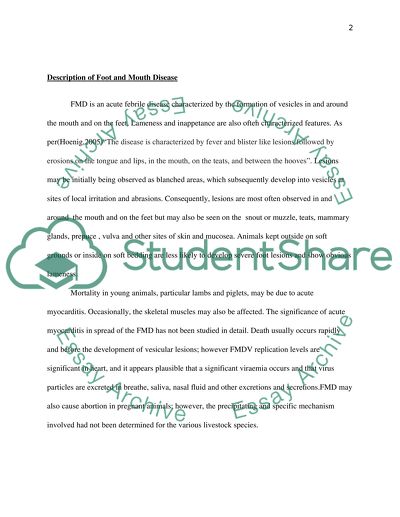Cite this document
(“Foot and Mouth Disease Research Paper Example | Topics and Well Written Essays - 1500 words”, n.d.)
Retrieved from https://studentshare.org/health-sciences-medicine/1433818-foot-and-mouth-disease
Retrieved from https://studentshare.org/health-sciences-medicine/1433818-foot-and-mouth-disease
(Foot and Mouth Disease Research Paper Example | Topics and Well Written Essays - 1500 Words)
https://studentshare.org/health-sciences-medicine/1433818-foot-and-mouth-disease.
https://studentshare.org/health-sciences-medicine/1433818-foot-and-mouth-disease.
“Foot and Mouth Disease Research Paper Example | Topics and Well Written Essays - 1500 Words”, n.d. https://studentshare.org/health-sciences-medicine/1433818-foot-and-mouth-disease.


